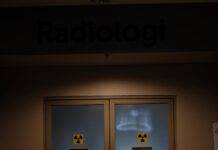
Ionizing Radiation Safety: Navigating Protective Measures and Monitoring Protocols
Introduction
Ionizing radiation poses inherent risks, necessitating robust safety measures in environments where radiation sources are present. This article delves into the importance of protective measures and monitoring protocols to ensure the safety of individuals working with or around ionizing radiation, outlining key strategies for effective radiation safety.
Understanding Ionizing Radiation
- Nature of Ionizing Radiation
- Emission of Particles: Ionizing radiation involves the emission of particles or electromagnetic waves with sufficient energy to ionize atoms.
- Types of Ionizing Radiation: This includes alpha and beta particles, gamma rays, and X-rays.
- Health Risks Associated with Ionizing Radiation
- Cellular Damage: Ionizing radiation can damage biological tissues at the cellular level, potentially leading to radiation sickness, cancer, or genetic mutations.
- Cumulative Effect: The health effects are often cumulative, emphasizing the need for stringent safety measures.
Protective Measures Against Ionizing Radiation
- Personal Protective Equipment (PPE)
- Lead Aprons and Shields: For individuals working with X-rays or gamma rays, lead aprons and shields provide effective protection.
- Protective Clothing: Ensuring proper coverage with protective clothing minimizes skin exposure.
- Radiation Shielding
- Lead and Concrete Barriers: Shielding workspaces with lead or concrete barriers helps reduce radiation exposure.
- Design Considerations: Facilities should be designed to incorporate effective shielding measures based on the type and intensity of radiation present.
- Minimization of Exposure Time
- Principle of ALARA: As Low As Reasonably Achievable (ALARA) is a guiding principle, emphasizing the importance of minimizing the time spent in proximity to radiation sources.
- Efficient Work Practices: Encouraging efficient work practices reduces unnecessary exposure.
- Maintaining Distance from Radiation Sources
- Inverse Square Law: Radiation exposure decreases with the square of the distance from the source. Maintaining a safe distance is a simple yet effective protective measure.
Monitoring Ionizing Radiation
- Use of Radiation Detection Instruments
- Geiger-Muller Counters: Portable instruments like Geiger-Muller counters detect and measure radiation levels.
- Dosimeters: Worn by individuals, dosimeters provide cumulative exposure data over time.
- Regular Workplace Surveys
- Scheduled Inspections: Conducting routine surveys of radiation levels in the workplace ensures ongoing safety.
- Identification of Hotspots: Surveys help identify areas with elevated radiation levels, prompting corrective actions.
- Personnel Monitoring
- Occupational Exposure Limits: Regular monitoring of personnel exposure ensures compliance with established occupational exposure limits.
- Prompt Notification: In the event of elevated exposures, prompt notification allows for investigation and corrective measures.
Emergency Response and Contingency Planning
- Emergency Protocols
- Evacuation Procedures: Clearly defined evacuation procedures ensure a swift response in the event of a radiation emergency.
- Emergency Communication: Establishing communication protocols facilitates coordination during emergencies.
- Decontamination Procedures
- Quick Response: Rapid decontamination procedures are crucial to minimize the spread of radioactive materials.
- Training and Drills: Regular training and drills prepare personnel for effective emergency response.
Employee Training and Awareness
- Radiation Safety Training
- Understanding Risks: Comprehensive training programs ensure that personnel understand the risks associated with ionizing radiation.
- Proper Usage of PPE: Training includes the correct usage of PPE and adherence to safety protocols.
- Communication of Safety Information
- Clear Signage: Clearly marked radiation zones and safety signage enhance awareness in the workplace.
- Regular Updates: Continuous communication of safety information and updates reinforces a culture of awareness.
Conclusion
Ionizing radiation safety is a multifaceted approach that combines protective measures, regular monitoring, emergency response planning, and comprehensive employee training. By integrating these strategies, workplaces can create an environment that minimizes the risks associated with ionizing radiation, ensuring the well-being of individuals and compliance with regulatory standards.
Radiography Hazards and Precautions
How to Calculate Radiation Safe Distance in Industry
Radiography Safety Toolbox Talk Meeting
Frequently Asked Questions (FAQs)
- What is ionizing radiation?
- Ionizing radiation involves the emission of particles or electromagnetic waves with sufficient energy to ionize atoms. Types include alpha and beta particles, gamma rays, and X-rays.
- What are the health risks associated with ionizing radiation?
- Health risks include cellular damage, radiation sickness, cancer, and genetic mutations. The effects are often cumulative over time.
- What are the key protective measures against ionizing radiation?
- Protective measures include the use of personal protective equipment (PPE), radiation shielding, minimizing exposure time, and maintaining distance from radiation sources.
- How is ionizing radiation monitored in workplaces?
- Radiation detection instruments like Geiger-Muller counters and dosimeters are used for monitoring. Regular workplace surveys and personnel monitoring ensure ongoing safety.
- What should be included in emergency response and contingency planning for ionizing radiation?
- Emergency protocols, evacuation procedures, decontamination procedures, and regular training and drills are essential components of emergency response and contingency planning for ionizing radiation.
























